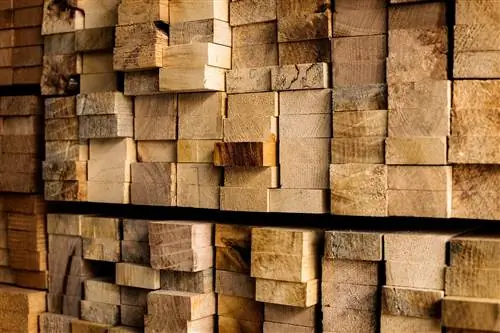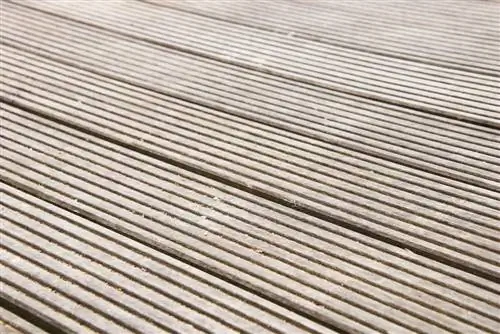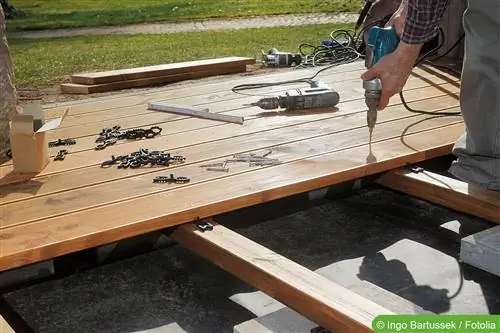- Author admin [email protected].
- Public 2023-12-17 03:39.
- Last modified 2025-01-24 12:45.
The weight of wood does not differ depending on the different types of wood, but moisture also plays a very important role.
Freshly cut wood weighs heavier than air-dried wood due to the higher moisture content.
| Type of wood | Botanical name | Weight freshly beaten (kg/m³) | Weight air dry (kg/m³) |
|---|---|---|---|
| Maple | Acer spp. | 800 | 670 |
| Birch | Betula spp. | 710 | 670 |
| Beech | Fagus spp. | 890 | 690 |
| Oak | Quercus spp. | 1100 | 750 |
| Spruce | Picea spp. | 700 | 450 |
| Pine | Pinus spp. | 770 | 510 |
| Larch | Larix spp. | 760 | 590 |
| Linde | Tilia spp. | 640 | 510 |
| Mahogany | Swietenia spp. | 950 | 850 |
| Walnut | Juglans spp. | 800 | 660 |
| Poplar | Populus spp. | 420 | 400 |
| Robinia (acacia) | Robinia pseudoacacia | 1100 | 850 |
| Fir tree | Abies spp. | 660 | 430 |
| Teak | Tectona grandis | 900 | 670 |
| Walnut | Juglans spp. | 800 | 660 |
| Cedar | Cedrus spp. | 490 | 370 |

Why is wood weight so important?
The weight of the wood species plays an important role for various reasons:
Construction and load capacity
The weight of wood is an important factor when selecting wood for various construction projects. As a rule, the heavier the wood, the higher its density and strength. Heavier types of wood often have a higher load-bearing capacity and are therefore more suitable for load-bearing structures such as beams, columns and beams.
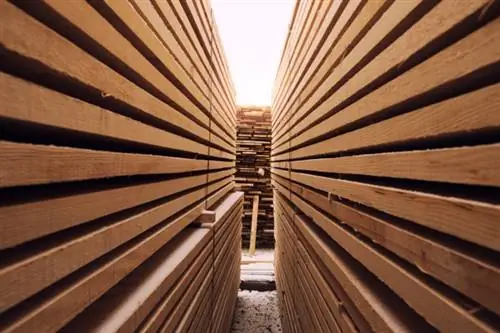
Stability and deformation
The weight of wood depends on its moisture content. The denser the wood, the less moisture it can absorb or release. Heavier weight wood is less prone to shrinkage and warping and is therefore more stable for certain applications.
Processing and Handling
The weight of the wood also affects handling and processing during the construction and installation process. Heavier types of wood may be more difficult to transport and handle, may require stronger tools and longer assembly times.
Aesthetics and intended use
The weight of a wood can also affect its aesthetic properties. Heavier wood may have a particular texture, color, or grain that makes it suitable for specific aesthetic requirements.
Wood use and sustainability
The weight of a type of wood also influences the wood consumption of a project. Lighter wood species may be more efficient for certain applications and therefore require fewer wood resources. Choosing the right type of wood can therefore contribute to the sustainability of a project.
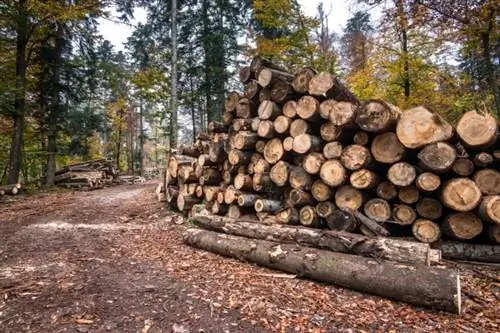
It is important to note that weight should not be the only criterion when choosing a type of wood. Other factors such as strength properties, durability, availability, cost and aesthetics should also be considered to find the best type of wood for a particular project.

